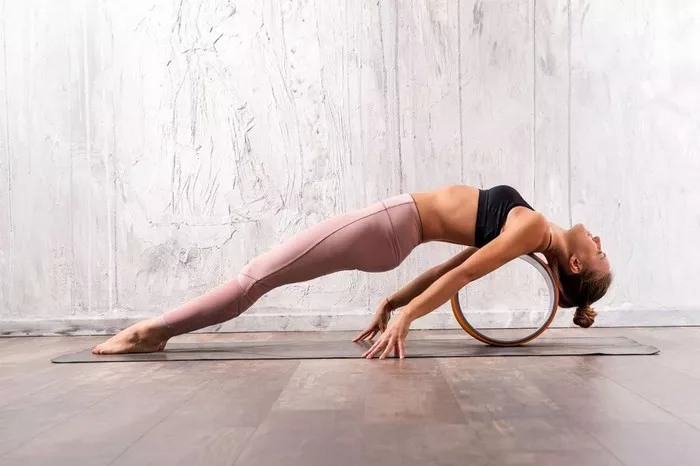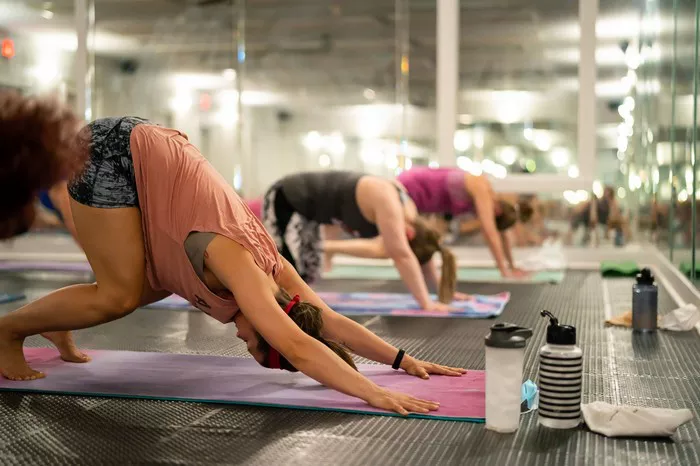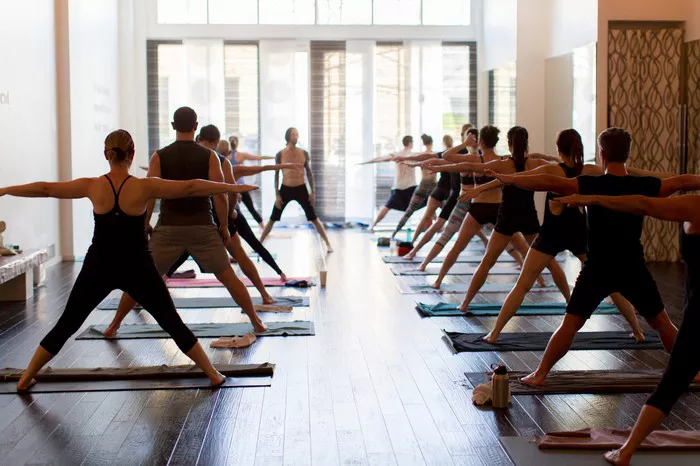Yoga has gained immense popularity over the past few decades, with various styles and practices designed to suit individual needs and preferences. One of the more intense forms of yoga is Hot Power Yoga, a dynamic and heated version of Power Yoga, combining strength, flexibility, and endurance training with the benefits of practicing in a heated room. But the question remains: how often should you do Hot Power Yoga to achieve optimal results without risking injury or burnout?
In this article, we will explore the benefits of Hot Power Yoga, how often it is safe and beneficial to practice, and the factors that influence your decision. We will also provide some tips for balancing Hot Power Yoga with other types of physical activity, ensuring a well-rounded fitness regimen that promotes both physical and mental well-being.
What Is Hot Power Yoga?
Hot Power Yoga is a style of yoga that takes the principles of traditional Power Yoga—characterized by vigorous, flowing sequences designed to build strength, stamina, and flexibility—and combines it with the added element of heat. Typically practiced in a room heated to around 90-105°F (32-40°C), the heat helps to warm up the muscles quickly, allowing practitioners to move deeper into stretches and poses. The heat also encourages sweating, which many believe aids in detoxification.
Power Yoga, in its traditional form, is often based on Ashtanga Yoga, but it’s generally less rigid and offers more flexibility in sequencing. Hot Power Yoga builds on this foundation by challenging the body further with a combination of heat, intensity, and fast-paced movement. The flow of the class is typically fast-paced, with poses often held for shorter amounts of time but in a continuous flow, providing both cardiovascular and muscular benefits.
The Benefits of Hot Power Yoga
Practicing Hot Power Yoga offers a wide range of physical, mental, and emotional benefits:
Increased Flexibility: The heat in a Hot Power Yoga class helps to warm the muscles, allowing practitioners to go deeper into stretches and improve overall flexibility over time.
Improved Strength and Endurance: The continuous flow of postures, paired with the challenge of heat, strengthens muscles and enhances endurance. This is particularly beneficial for individuals looking to build muscle tone, strength, and cardiovascular fitness.
Detoxification: Sweating in a heated room is believed to help the body expel toxins through the skin. While this does not replace the function of the liver and kidneys in detoxification, many practitioners report feeling “cleansed” after a hot yoga session due to the increased sweating.
Mental Clarity and Stress Relief: Yoga in general has long been known for its ability to reduce stress and promote mental clarity. Hot Power Yoga, with its intense physical demands, offers a form of meditation in motion, helping to clear the mind, improve focus, and release tension. The heat adds an additional layer of challenge that requires deep concentration, further promoting mindfulness and mental relaxation.
Increased Cardiovascular Fitness: Due to the intensity and fast pace of Hot Power Yoga, it provides a great cardiovascular workout. The continuous flow of postures increases heart rate, which can improve cardiovascular health and help burn calories.
Improved Balance and Coordination: Hot Power Yoga requires maintaining stability and balance in various postures while moving through a fluid sequence. This helps to develop better balance, coordination, and body awareness.
Enhanced Mental Toughness: The physical challenge of practicing in a heated room can also enhance mental toughness, as it pushes individuals to persevere through discomfort. The combination of strength, stamina, and focus required to complete a Hot Power Yoga class can foster resilience both on and off the mat.
How Often Should You Practice Hot Power Yoga?
The frequency with which you should practice Hot Power Yoga depends on various factors, including your level of experience, fitness goals, overall health, and how your body responds to the heat. Here are some general guidelines:
1. For Beginners
If you’re new to Hot Power Yoga, it’s important to start slow. The combination of intense physical exertion and the heat can be overwhelming if you’re not accustomed to it. Most beginners should start by practicing Hot Power Yoga once or twice a week. This allows your body time to adjust to the heat and the intensity of the class while minimizing the risk of injury or exhaustion.
Beginners should also take time to listen to their bodies and not push beyond their limits, especially in the heated environment. It’s essential to stay hydrated, take breaks when needed, and focus on mastering the basic postures and flow at your own pace.
2. For Intermediate Practitioners
For those who have been practicing Hot Power Yoga for a few months and are comfortable with the heat and the pace of the class, 2-4 times per week may be appropriate. At this stage, you may begin to notice improvements in flexibility, strength, and endurance, and your body will likely be better able to handle the heat and intensity.
Practicing more frequently can deepen your practice, enhance muscle tone, and continue to improve your cardiovascular health. However, it’s important to vary the intensity and allow sufficient rest between sessions to avoid overtraining.
3. For Advanced Practitioners
Advanced practitioners of Hot Power Yoga, those who have been practicing for a year or more, may practice 4-6 times per week, depending on their individual fitness goals and physical tolerance. At this stage, the body is well-conditioned to handle the heat and intensity, and regular practice can lead to more advanced postures, improved endurance, and further refinement of technique.
Even at an advanced level, it’s crucial to maintain balance and allow for adequate rest. Overtraining can lead to burnout, injuries, and muscle fatigue. Rest days are necessary to allow muscles to recover and to prevent chronic stress on the body.
4. Listen to Your Body
Regardless of your level, it’s important to listen to your body. Some days you may feel energized and ready to take on a challenging class, while other days your body may require rest or a gentler practice. Factors like sleep quality, nutrition, hydration, and overall stress levels play a significant role in how you feel and how well you recover.
If you experience any signs of overtraining—such as excessive fatigue, soreness that lasts for days, irritability, or lack of motivation—consider reducing the frequency of your Hot Power Yoga practice and incorporating restorative yoga or other types of exercise into your routine.
Balancing Hot Power Yoga with Other Activities
While Hot Power Yoga is a fantastic workout that offers strength, flexibility, and endurance benefits, it’s important to balance it with other types of exercise to prevent overuse injuries and promote overall fitness. Incorporating different forms of exercise can ensure that you’re working different muscle groups and improving all areas of fitness.
Strength Training: While Hot Power Yoga builds strength, it might not target certain muscle groups as effectively as traditional weight training. Consider adding a strength-training workout into your weekly routine to complement your yoga practice.
Restorative Yoga: On days when you’re feeling sore or fatigued from Hot Power Yoga, consider practicing restorative yoga or other gentler forms of yoga. This helps to restore your muscles, improve flexibility, and reduce stress without putting additional strain on your body.
Cardio Workouts: Although Hot Power Yoga can be cardiovascularly demanding, incorporating activities like running, cycling, or swimming into your routine can further boost cardiovascular fitness and endurance.
Rest Days: Make sure to take at least one or two full rest days each week to allow your body to recover. Active rest, such as walking or gentle stretching, can help prevent stiffness without taxing your body further.
Hydration and Nutrition
Since Hot Power Yoga is practiced in a heated room and involves heavy sweating, staying hydrated is of utmost importance. Dehydration can lead to dizziness, muscle cramps, and fatigue, so drink plenty of water before, during, and after your practice. Electrolyte-rich drinks can also help replenish minerals lost through sweat.
A well-balanced diet is equally important for supporting your practice. Ensure that you’re eating enough to fuel your body for the intense workouts. Focus on whole foods rich in vitamins, minerals, lean proteins, healthy fats, and complex carbohydrates to give your muscles the energy they need to recover and perform at their best.
Conclusion
Hot Power Yoga is a challenging and rewarding practice that can provide numerous physical, mental, and emotional benefits. The key to a successful Hot Power Yoga practice lies in finding the right balance for your body. For most people, practicing 2-4 times per week offers an ideal balance between intensity and recovery, but this can vary depending on your level of experience, fitness goals, and how your body responds to the practice.
Remember to listen to your body, stay hydrated, and incorporate rest and other forms of exercise into your routine. By doing so, you’ll not only maximize the benefits of Hot Power Yoga but also maintain a sustainable and well-rounded fitness regimen that supports overall health and well-being.
Related Topics:


















